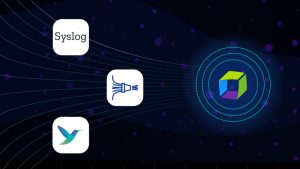Artificial intelligence, automation, and the cloud have been major forces in the fast-paced transformation of today’s IT landscape. As the digital sphere continues to evolve for modern needs, so has DevOps as a discipline.
Just as organizations have increasingly shifted from on-premises environments to those in the cloud, development and operations teams now work together in a DevOps framework rather than in silos. But as digital transformation persists, new inefficiencies are emerging and changing the future of DevOps.
According to the 2022 Dynatrace CIO Report, the average organization uses 10 monitoring tools across its technology stack due to silos and inability to scale. Moreover, the average proportion of the technology stack into which organizations have end-to-end observability is 9%. With tool sprawl and data proliferation, problem resolution is increasingly difficult and takes time away from innovation. If DevOps hasn’t solved the silo problem, is DevOps dead?
DevOps is a framework that aims to eliminate organizational silos to streamline successful software delivery. In the free ebook “A Beginner’s Guide to DevOps,” DevOps is defined as a set of software development and delivery best practices to close the gap between software development and IT operations.
Dynatrace DevOps activist Andreas Grabner and director of sales engineering Brian Wilson tackled this question in a recent episode of the PurePerformance podcast. Joined by Stephen Thair, co-founder and former CTO of DevOpsGroup, Grabner and Wilson discuss DevOps in today’s digital ecosystem. They explore how DevOps’ core principles and terminology are evolving with digital transformation and offer ways for organizations to adapt to the changing DevOps landscape.
Observation #1: Core DevOps principles are evolving
DevOps principles shifted how organizations view software delivery. By removing development and operations team silos, organizations see faster software delivery, fewer accountability questions when issues arise, and higher-quality software.
Some core DevOps principles include reducing toil and removing boundaries. The benefits and challenges of boundaries are beginning to influence how we the future of DevOps. In the podcast, Grabner recalled his interview with Kelsey Hightower at the Perform 2023 conference. “[Hightower] made this point: in certain aspects, removing boundaries and walls doesn’t make sense,” Grabner said. “For certain things, you need to have clear boundaries with a well-defined contract to define how certain areas are to interact with one another.”
According to Thair, some ideas about accountability in the software development process promote removing boundaries to enable collaboration, not ownership. “If we go back to where DevOps started and the idea of breaking down silos, I don’t think that ‘You build it, you run it’ was the be-all, end-all [concept],” he said. “What it did mean is that someone from [the operations team] needs to be in the room for software development instead of being thrown in at the end.” As a result, developers can address operational concerns earlier in the software delivery process and streamline efforts.
Thair elaborated on the concept of “designing for operations” with a car analogy. “When someone needs to change something relatively simple, I must remove five other parts so they can reach the part that needs changing. That’s not good design for Ops,” he said. “How do [developers] make the things that are most likely to break, easily accessible?” Thair suggests that the solution is to remove the silo between development and operations teams. “We need developers to understand that just because you shifted the product to another team, you are not free from responsibility.”
Observation #2: The future of DevOps terminology
As our understanding of DevOps evolves, some question whether the term needs updating. “If we’re talking about platform engineering versus SRE [site reliability engineering] versus DevOps, to say DevOps is dead is naïve,” Wilson said. “In reality, it has evolved [to encompass all three concepts].”
At its core, DevOps encourages collaboration between development and operations teams to speed up software delivery. Platform engineering has emerged as a potential solution to many of DevOps’ inefficiencies. Platform engineers are tasked with building workflows and toolchains that enable developers and operations teams to work more seamlessly with one another. As modern needs evolve, DevOps is also evolving to encompass platform engineering as a new discipline aimed at reducing friction in DevOps cycles.
Wilson compares the changing DevOps landscape to that of observability. He recalls Dynatrace’s nascent days in the application performance monitoring space when observability was becoming a hot topic. “The three pillars of observability at the time were metrics, logs, and traces,” Wilson said. “We’d been excited about these pillars forever, so what was different [about this new buzzword of observability]?”
The answer was that observability is a more advanced model than these simple pillars alone. “Observability was built on the original concepts [of metrics, logs, and traces] but expanded for modern needs,” he continued. From the foundational Dynatrace platform to today, “We’ve gone from systems thinking to holistic thinking.”
The impact of changing terminology, as Thair points out, is that the broader terminology brings new people into the field. However, Grabner notes that the expanding terminology can affect those who are new to the discipline. “At the end of the ‘Is DevOps dead?’ webinar, we all agreed that you need to come up with a new term because as things change, confusion occurs,” Grabner said. “After 5, 10, 15, things have changed. Let’s find a new term so that people who are just starting with this can grasp it rather than having to start on day one.”
Observation #3: Organizations can adapt with DevOps evolution
As organizations grapple with DevOps’ evolution, adaptability can help them overcome roadblocks. One of the main roadblocks that arises with a broader definition for DevOps is responsibility. Grabner poses a scenario in which he’s brainstorming a new product and considers the features that will satisfy end users. Who is responsible for that in a modern development team? From product managers to product owners and product architects, responsibility can get lost in the shuffle.
Thair emphasizes the importance of balancing business, software, and user experience factors. “The product manager should be the person who is bringing operational requirements and acceptance criteria in the system,” he said. “Most product managers come from the business, tech, or user experience side. A good product manager must balance all three of these out.”
Adopting the SRE cultural shift can also help organizations evolve with DevOps. SRE aims to lighten the burden on development and operations teams by reducing redundant tasks. Site reliability engineers focus on automation, application availability, and performance, and help detect issues earlier in the software development lifecycle. According to Thair, SREs are critical because simply shipping code is not enough. “SREs are responsible for keeping the system up in line,” he said. “They take the cognitive load off of the developer so that developers have more brain power to write, build, [and innovate].”
The future of DevOps
Digital transformation will continue to affect how we view software delivery practices. From DevOps to observability, the changing digital landscape has a direct impact on organizations’ abilities to deliver high-quality, efficient, secure software. Comparing traditional views on these key concepts to updated views can help organizations keep pace with modern trends and potentially discover new ways to deliver mission-critical outcomes.
To listen to the full episode, check it out here: “The Future of DevOps: Can ChatGPT be Your Ultimate Engineer?”
Find the PurePerformance podcast on the following platforms:





Looking for answers?
Start a new discussion or ask for help in our Q&A forum.
Go to forum